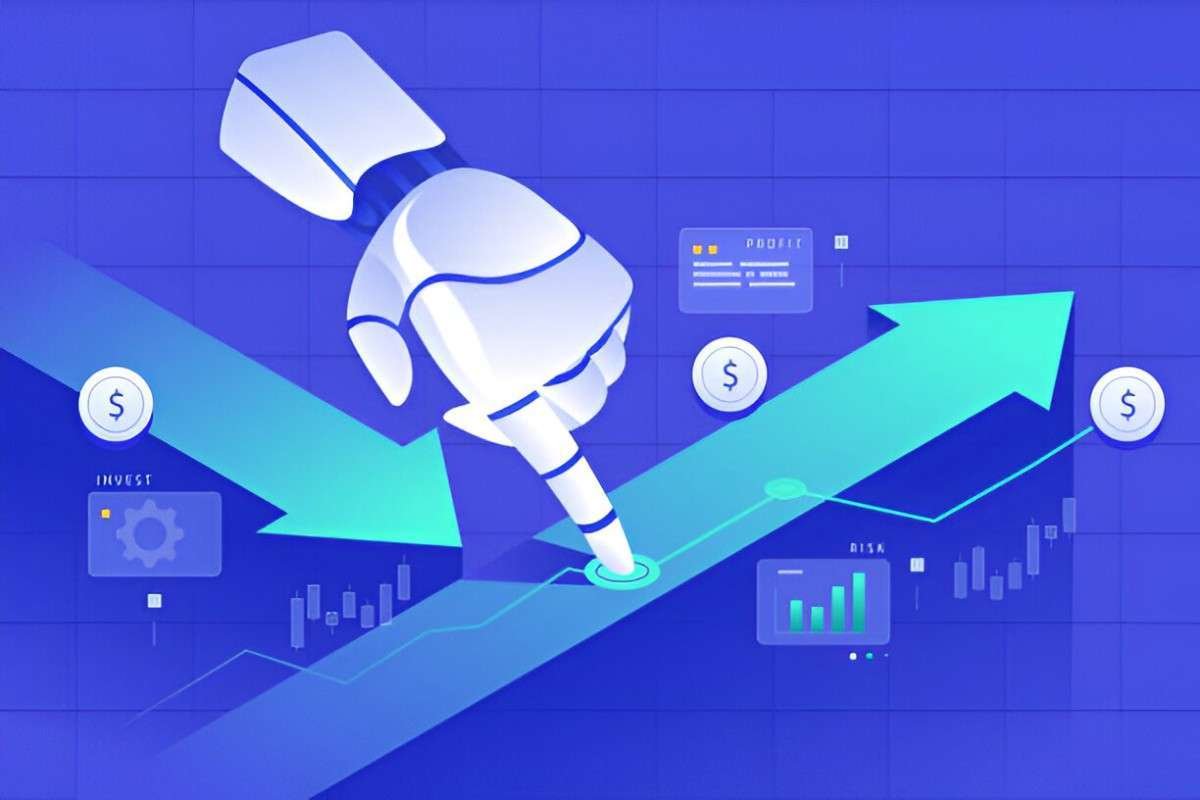When it comes to stock market trading, there has been a notable shift over the years from traditional methods to more advanced approaches involving technology. Among the most revolutionary techniques is the use of machine learning. In this article, I will walk you through how machine learning (ML) can be applied to stock market trading, its benefits, challenges, and how you can begin integrating it into your trading strategy.
Table of Contents
What is Machine Learning and How Does It Relate to Stock Market Trading?
Machine learning refers to a subset of artificial intelligence (AI) where systems improve their performance over time based on experience without being explicitly programmed. In the context of stock market trading, machine learning involves using algorithms and statistical models to identify patterns and make predictions about stock prices and market behavior.
I see machine learning in stock trading as an evolution of technical analysis. Traditionally, traders relied on historical price charts, patterns, and indicators to make their decisions. While these methods are still widely used, machine learning brings an additional layer of sophistication by analyzing vast amounts of data and identifying complex patterns that are not immediately apparent to human traders.
How Machine Learning Helps in Stock Market Trading
There are several ways in which machine learning can be applied to stock market trading, from predicting stock prices to managing risks and identifying trading opportunities. I will break down the key areas where ML makes a significant impact:
- Predicting Stock Prices: One of the primary uses of machine learning in stock trading is predicting future stock prices based on historical data. This involves training a machine learning model on past stock data and using it to forecast future trends. For example, an ML model can take historical price data, volume, and other relevant market data to predict whether a stock’s price will go up or down in the future. The model might also factor in external events, such as economic indicators or news, to refine its predictions.
- Identifying Market Trends and Patterns: Machine learning algorithms can help identify trends and patterns in stock market data that may not be immediately obvious to a human trader. By analyzing large datasets, ML models can detect subtle correlations and anomalies in market behavior that can lead to better decision-making. For instance, a model could identify a specific combination of factors that predict a bullish market, which could then be used to make profitable trades.
- Portfolio Optimization: Machine learning can also help traders build and optimize portfolios. By analyzing historical data, ML algorithms can assess the risk and return of various stocks and recommend a portfolio that balances these factors based on the trader’s goals. This can help investors diversify their portfolios and manage risk more effectively.
- Algorithmic Trading: Algorithmic trading uses machine learning algorithms to automatically execute trades based on predefined criteria. These algorithms can analyze market data in real time and place buy or sell orders based on specific conditions, such as price movements, volume, or other market signals. With machine learning, these algorithms become more sophisticated, allowing them to adjust their strategies based on evolving market conditions.
- Sentiment Analysis: Another interesting application of machine learning in stock trading is sentiment analysis. This involves analyzing news articles, social media posts, and financial reports to gauge public sentiment toward a particular stock or the market as a whole. Machine learning models can process large amounts of text data and extract valuable insights about market sentiment, which can then be used to inform trading decisions.
Types of Machine Learning Models Used in Stock Market Trading
To better understand how machine learning works in stock market trading, it’s important to explore the different types of models that can be used. The choice of model depends on the problem at hand, the available data, and the goals of the trader. Below, I’ll explain some common machine learning models used in stock trading.
- Supervised Learning Models: These are the most commonly used models in stock market trading. In supervised learning, the algorithm is trained on labeled data, meaning that historical data is paired with known outcomes (e.g., whether a stock’s price went up or down). The algorithm learns to map inputs (such as stock prices, volume, etc.) to the correct output (e.g., price movement). Popular supervised learning algorithms used in trading include:
- Linear Regression: This is one of the simplest machine learning models. It predicts a continuous output, such as future stock prices, based on historical data. The algorithm tries to find the best-fitting line that minimizes the error between the predicted and actual prices.
- Decision Trees: Decision trees create a tree-like model of decisions. They are used to predict the value of a target variable based on input features. In stock trading, decision trees can help identify buy or sell signals based on historical market conditions.
- Random Forests: Random forests are an ensemble of decision trees. They work by combining the predictions of multiple decision trees to improve accuracy and reduce the risk of overfitting.
- Support Vector Machines (SVMs): SVMs are powerful supervised learning models used for classification and regression tasks. In stock trading, SVMs can be used to classify stocks as “buy” or “sell” based on various features.
- Unsupervised Learning Models: In unsupervised learning, the algorithm is not provided with labeled data. Instead, it tries to find patterns and relationships in the data on its own. Unsupervised learning can be useful in stock market trading for clustering stocks with similar characteristics or identifying anomalies in market data. Common unsupervised learning models include:
- K-Means Clustering: This algorithm groups stocks with similar characteristics together. Traders can use this to identify sectors or industries that are performing similarly.
- Principal Component Analysis (PCA): PCA reduces the dimensionality of large datasets and can help traders identify the most important factors influencing stock prices.
- Reinforcement Learning Models: Reinforcement learning (RL) is a type of machine learning where the algorithm learns by interacting with an environment and receiving feedback. In stock trading, this can be used to develop trading strategies that evolve over time based on rewards (profits) or penalties (losses). RL models are often used in algorithmic trading and portfolio management.
Challenges of Applying Machine Learning in Stock Market Trading
While machine learning holds great promise for stock market trading, there are several challenges that traders face when applying these techniques. I’ve highlighted some of the main issues:
- Data Quality: Machine learning models rely on large amounts of historical data to make predictions. However, the quality of this data is crucial. Poor-quality data, such as inaccurate or missing values, can lead to misleading predictions and poor trading decisions.
- Overfitting: Overfitting occurs when a machine learning model becomes too closely aligned with the training data and loses its ability to generalize to new, unseen data. This can be a major issue in stock market trading, where market conditions change over time.
- Market Volatility: The stock market is inherently volatile and influenced by a wide range of factors, including economic events, geopolitical developments, and investor sentiment. Machine learning models may struggle to account for sudden shifts in market behavior.
- Model Interpretability: Some machine learning models, such as deep learning algorithms, can be highly complex and difficult to interpret. This lack of transparency can make it challenging for traders to understand why a model is making a particular decision.
- Ethical Considerations: Machine learning models can be used to exploit market inefficiencies, but there is a fine line between using technology to gain an edge and engaging in unethical practices, such as market manipulation.
Practical Example: Using Machine Learning to Predict Stock Prices
Let’s walk through a simple example of how machine learning can be used to predict stock prices. I’ll use a linear regression model, one of the simplest and most commonly used models, to predict the future price of a stock.
Suppose I want to predict the price of Stock X for the next day. I collect the past 100 days of stock price data, along with relevant features such as trading volume, moving averages, and other technical indicators.
After preprocessing the data (removing any missing values and scaling the features), I split the data into training and testing sets. I train the linear regression model on the training set, using the historical stock price and features as inputs.
Once the model is trained, I test it on the testing set to evaluate its performance. The model outputs a predicted price for the next day, and I can compare it with the actual price to assess its accuracy.
Conclusion: The Future of Machine Learning in Stock Market Trading
The application of machine learning to stock market trading has the potential to revolutionize the industry by enabling traders to make more informed decisions, manage risk more effectively, and develop sophisticated trading strategies. While there are challenges, the benefits of using machine learning far outweigh the risks, especially as technology continues to evolve.
I believe that machine learning will become an integral part of stock market trading in the future, and traders who embrace this technology will have a competitive edge. Whether you’re a seasoned trader or just starting out, understanding how machine learning works and how to apply it to stock market trading can be a valuable skill to add to your toolkit.
Tables:
| Machine Learning Model | Application in Stock Trading | Example |
|---|---|---|
| Linear Regression | Predicting future stock prices | Predict the next day’s price of a stock |
| Decision Trees | Classifying buy/sell signals | Predict when to buy or sell based on historical data |
| Random Forests | Improving prediction accuracy | Combine multiple decision trees to improve performance |
| K-Means Clustering | Identifying similar stocks | Group stocks in the same sector together |
| PCA | Dimensionality reduction | Identify key factors influencing stock prices |
This article serves as an introduction to the world of machine learning in stock market trading. As you continue to explore this field, you’ll uncover even more powerful ways to use machine learning to enhance your trading strategies.





